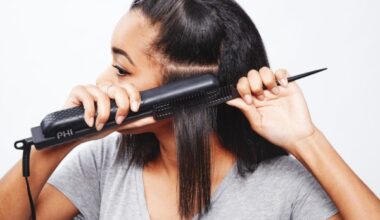Physical fitness is crucial for overall well-being, and understanding its various components is essential for designing an effective fitness routine. Whether you’re an athlete, a fitness enthusiast, or just looking to improve your health, incorporating a balanced approach to exercise can lead to optimal results. In this article, we will delve into the 12 components of physical fitness, shedding light on each aspect and providing valuable insights to help you attain your fitness goals.
1. Cardiovascular Endurance – (12 Components of Physical Fitness)
The term “cardiovascular endurance” describes your heart’s, lungs, and blood vessels’ capacity to efficiently deliver fuel and oxygen to your muscles for prolonged physical activity. Engaging in activities such as running, swimming, or cycling can enhance your cardiovascular endurance. Regular aerobic exercise improves heart health, lowers the risk of chronic diseases, and boosts your stamina.
2. Muscular Strength
can be referred to as the maximum amount of force your muscles can exert against resistance. Engaging in resistance training activities like weightlifting helps increase muscle strength. Developing strong muscles not only improves your physical performance but also helps prevent injuries and supports better posture.
3. Muscular Endurance (12 Components of Physical Fitness)
Muscular endurance is the capacity of your muscles to exert force repeatedly over an extended period. It plays a crucial role in activities that require sustained effort, such as cycling, hiking, or performing multiple repetitions of an exercise. Incorporating exercises that target specific muscle groups and gradually increasing the duration or intensity can enhance muscular endurance.
4. Flexibility
The range of motion around a joint is referred to as flexibility. Engaging in activities like yoga, Pilates, or stretching exercises improves flexibility. Maintaining good flexibility enhances athletic performance, reduces the risk of injuries, and promotes better posture and mobility.
5. Body Composition (12 Components of Physical Fitness)
The percentage of fat, muscle, bone, and other components in your body is called body composition. Achieving a healthy body composition involves reducing excess body fat and increasing lean muscle mass. A balanced exercise routine, including cardiovascular exercise and strength training, along with a nutritious diet, a crucial part in achieving and keeping a healthy body composition.
6. Power
Power is the capacity to produce the greatest amount of force in the quickest possible period. It is crucial for activities that require explosive movements, such as jumping, sprinting, or throwing. Plyometric exercises, Olympic lifts, and speed drills can help improve power. Enhancing power can boost athletic performance and help prevent age-related declines in muscle function.
7. Speed (12 Components of Physical Fitness)
SSpeed is the capacity to move swiftly from one point to another. It plays a significant role in various sports and activities. Incorporating interval training, sprint drills, and agility exercises can help improve speed. Enhancing speed not only enhances athletic performance but also improves overall coordination and reaction time.
8. Agility
Agility is the ability to change direction quickly and efficiently. It involves a combination of balance, coordination, speed, and power. Agility training, such as ladder drills, cone drills, and sport-specific movements, can enhance this component of physical fitness. Improving agility can benefit athletes in sports like basketball, soccer, and tennis, as well as in everyday activities that require quick movements and reflexes.
9. Balance (12 Components of Physical Fitness)
The ability to retain stability and control of your body’s position is called balance. It is essential for activities that involve maintaining a steady posture, such as yoga, martial arts, or even everyday tasks like walking and climbing stairs. Including balance drills like one-legged standing or using balance boards, can aid in enhancing balance and lowering the risk of falls, particularly in elderly persons
10. Coordination
Coordination is the ability to combine multiple movements smoothly and efficiently. It involves the synchronization of different body parts and is vital for activities like dancing, playing sports, and performing complex exercises. Activities that challenge hand-eye coordination, footwork, and bilateral movements can enhance coordination. Improved coordination not only enhances physical performance but also supports cognitive functions and overall motor skills.
11. Reaction Time (12 Components of Physical Fitness)
Reaction time refers to the speed at which you respond to a stimulus. It plays a crucial role in sports, driving, and other activities that require quick reflexes. Exercises that enhance reaction time include agility drills, quick-footed exercises, and hand-eye coordination activities. Improving reaction time can lead to better performance, increased safety, and enhanced overall cognitive function.
12. Mental Stamina
Mental stamina refers to the ability to sustain focus, concentration, and motivation during physical activities or challenges. Engaging in activities like meditation, mindfulness practices, and endurance training can improve mental stamina. Strengthening mental stamina enables you to push through physical discomfort, overcome mental barriers, and achieve your fitness goals.
Conclusion
Understanding and incorporating these 12 components of physical fitness into your exercise routine will help you develop a well-rounded approach to fitness. Remember, each component is interconnected and contributes to your overall physical performance. By focusing on improving these aspects, you can enhance your athletic abilities, lower the chance of injuries, and live a healthier, more active life. Embrace the journey of fitness, and enjoy the numerous benefits that come with a balanced approach to physical activity.






